in:Flux Cloud
in:Flux simulations can now be submitted to a cloud server for solving.
- The cloud manager can be accessed via the main “Run” button or through the project menu (Project > Cloud Manager)

- Simulations can then be selected to run in the cloud:
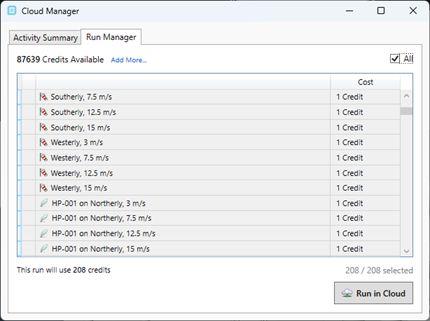
- The benefit of using the cloud server is that the simulations are solved in parallel. When a batch of simulations is submitted to the cloud, the server will deploy the same number of virtual machines and automatically assign a simulation to a virtual machine. The simulations will then all run on their own machine, and data will be stored on the cloud for later use.
- The whole project can therefore be finished in the time it takes the longest simulation to finish. For example, if there are 10,000 simulations in the project, and the longest simulation takes 20 minutes to run, the entire project of 10,000 simulations will be completed in 20 minutes.
- Post-processing data is streamed back to the local machine as needed.
- By default, simulation data is stored on the cloud and can be accessed locally from in:Flux. The data is secure and can only be accessed with the same license used to run the simulations.
- Cloud services are provided by Insight Numerics and use Microsoft Azure.
- Using the cloud capability requires cloud credits to be added to an in:Flux license. Please contact us to add cloud credits to your existing in:Flux license.
Probits for Toxic and Thermal Fatality Assessments
- Probits for toxic chemicals have been added to the fluids database (ammonia example below, the probit is shown on the right, third row down)

- Dose is recorded for transient simulations. For steady-state simulations, the user can select and exposure time.
- Dose and fatality variables are now included for all post-processing items, including visuals (contours, isosurfaces) and all monitors.
- For risk data sets associated with a dose variable, the maximum fatality footprint can be output on risk contours and isosurfaces.
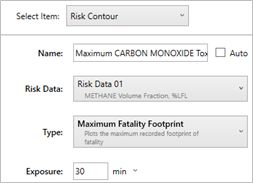
Other Feature improvements
- New .ifx file format, which allows for significantly quicker file saving and further performance improvements in the future.
- Maximum footprint of a risk data’s variable is now shown as an option for risk contours and isosurfaces.
- Added a line option to contours including risk contours.

- Color options for the lines are available on the property grid:

- Color options for the lines are available on the property grid:
- Clearer selection mechanism for auto or user-defined min and max values for contours and other visuals:
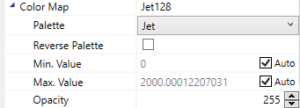
- Added option to flatten isosurfaces onto a single plane. This gives the user the ability to plot “maximum” contours in a certain direction by collapsing the isosurface onto a plane with a normal in the desired direction. This option is also available for risk isosurfaces.
- Added initial gas cloud option for dispersion simulations – this is available via the “Advanced” option when setting dispersion simulations. The initial gas cloud may be viewed after the simulation has been created via the property grid.
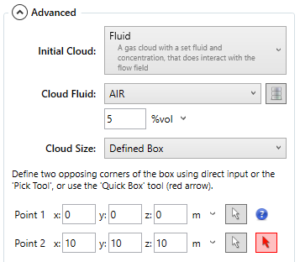
- Transient option for risk data sets – a simulation’s data can be set to record either at the end of a simulation or at a specified time. This feature works only if transient simulations have been set for the risk data set, and will not affect the results from steady-state simulations. This option is available on the “Advanced” tab when creating a risk data set.
- Added transient volume flow rate profiles for HVAC inlets, outlets and fans.
- Added peak surface radiative heat flux for comparison to KFX results.
- Improved the spectral model for hydrogen fires, with results that are much closer to validation data. The previous version resulted in radiation values that were too low.
- Added pressure coefficient variable for ventilation simulations.
- Added clash detection for inflows – a warning now appears if an inflow intersects, or is very close to, a geometry surface.
- Added slice option for the clip plane.
- Better performance of the transient data grid.
- Better meshing around porous regions.
- Better overall timestep selection for visuals.
- “Visible Only” option for cropping and simplifying geometry.
- Clearer selection of the timesteps for transient visuals on the property grid.
- Added the ability to import leaks specifying mass flow rate instead of hole size.
- Geometry export includes .obj files.
Bug Fixes
- Fix for rotation angles on the UI for custom emissions.
- Fix for HVAC entities not appearing correctly after adding to the project.
- Fixed issue with streamline previews.
- Fixed issue where the streamlines were generated slowly.
- Minor fixes for the .kfx file reader.
- Fixed issue where upstream pressure increases for high pressure gas leaks that were specified on transient inflows caused meshing issues.
- Fixed timestep-handling for transient disk diameter changes for high pressure leaks.
- More robust streamline trimming when intersecting geometry.
- Fixed issue with pick tool not working correctly when a clip plane was active.
- Various minor bug fixes.
Release Date:
June 26, 2025
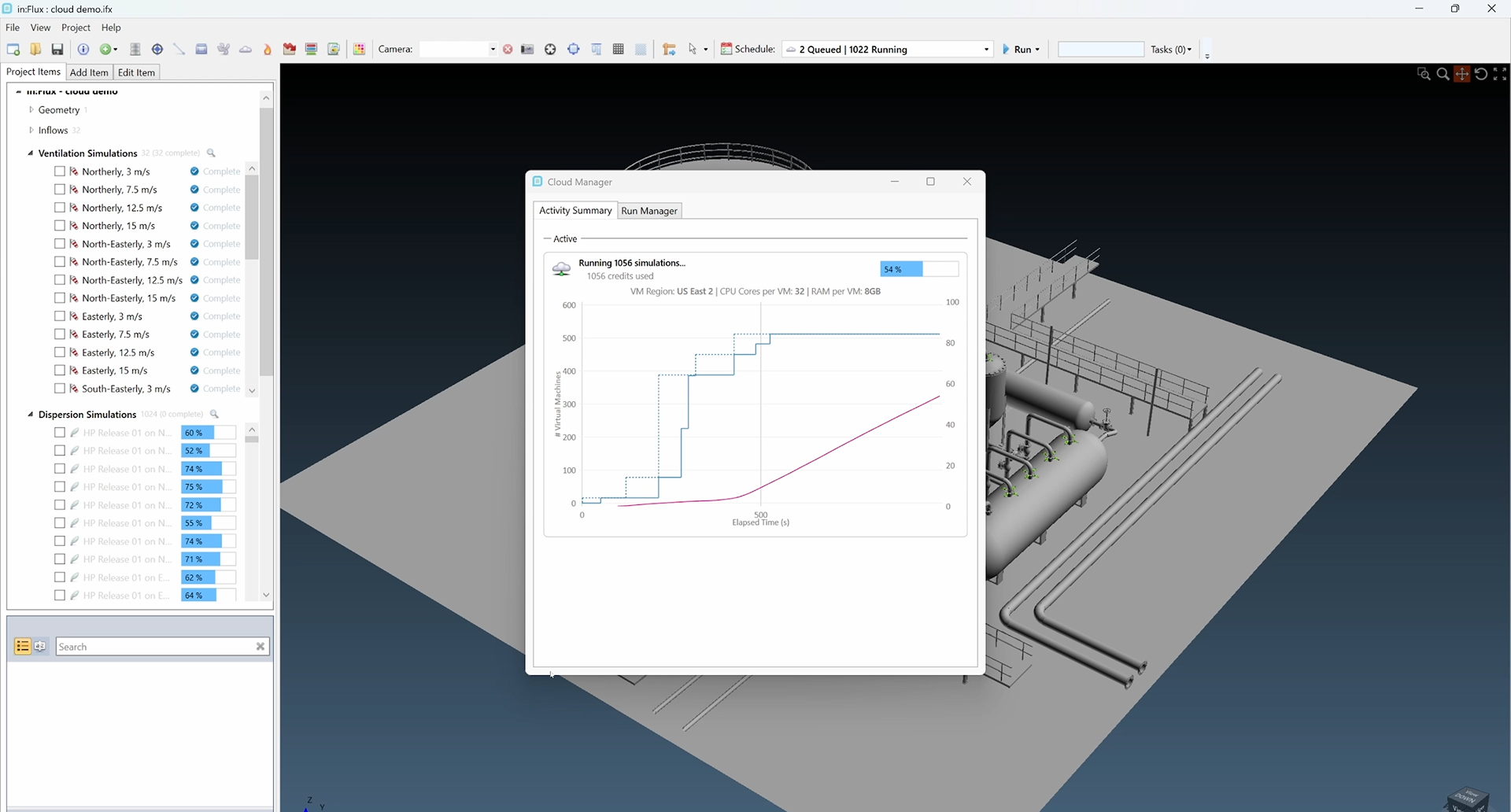
Find us